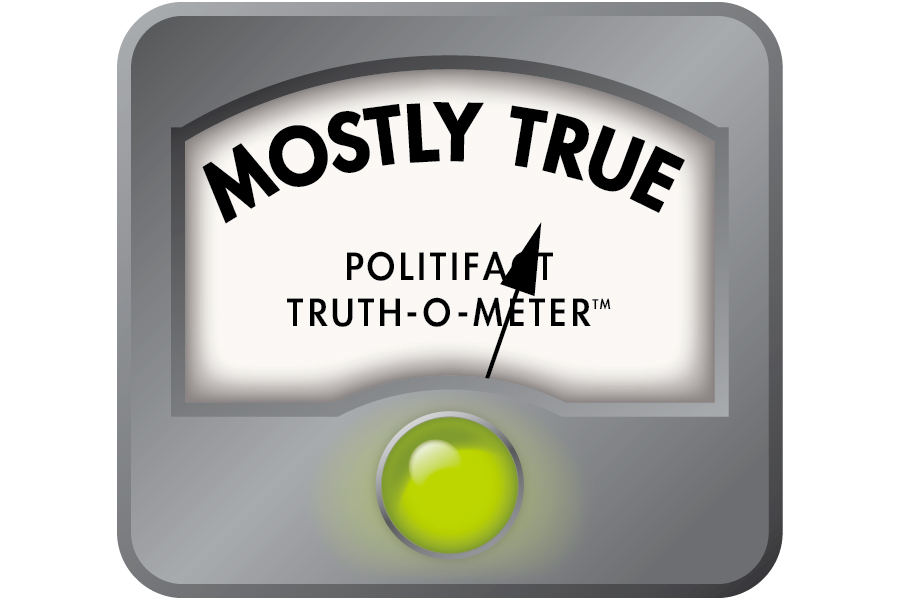Former two-term Colorado Gov. John Hickenlooper is a rare breed in the 2020 presidential race — he’s running as a moderate.
On health care, he supports universal coverage and boasts about Colorado’s record-low uninsured rate. But unlike many of his competitors for the Democratic nomination, he opposes “Medicare-for-all,” the single-payer federal system that would guarantee health care coverage to every American.
Hickenlooper has been making the rounds on cable talk shows and is trying to distinguish himself as a compromiser. In an interview on MSNBC’s “Meet the Press,” Hickenlooper said, “We got to almost universal coverage in health care in Colorado. We expanded Medicaid. We created one of the most innovative exchanges in the country.” His campaign website claims that “nearly 95 percent” of Coloradans currently have health care coverage.
We wondered how Colorado’s uninsured rate changed during Hickenlooper’s time in the governor’s mansion and how it compares with the rest of the country.
How Did Hickenlooper Do It?
The Affordable Care Act, or ACA, authorizes states to expand Medicaid to include health care coverage for all adults earning up to 138% of the federal poverty level. Colorado is one of 37 states that have opted to do so.
In 2013, then-governor Hickenlooper announced his proposal to expand Medicaid at no cost to the state general fund. Under the ACA, the federal government would pay for the program until 2016, after which states had to pay a portion. Hickenlooper planned to cover future expenses with cost-cutting efforts and existing revenues, including a hospital provider fee rolled out in 2009.
After Hickenlooper launched the Medicaid expansion, Colorado’s uninsured rate dropped from 14.3% in 2013 to 6.5% in 2017, according to the Colorado Health Institute.
However, about 350,000 Coloradans still don’t have health insurance — one-quarter of whom are undocumented, making them ineligible for public insurance. Also, the price of coverage continues to rise in Colorado, where people pay some of the highest premiums in the United States.
Hickenlooper saw Medicaid expansion as a step toward his goal of making Colorado the “healthiest state in America.” But he hasn’t always supported policies that could give more people health care coverage. In 2016, he opposed a ballot measure that would have created a single-payer state health care system called ColoradoCare. Then, he said he’d be open to a Trump administration-backed policy to implement a work requirement for Medicaid recipients.
How Does Colorado Compare?
Hickenlooper’s Medicaid expansion more than halved Colorado’s uninsured rate. But if a 6.5% uninsured rate counts as “almost universal coverage,” then how many other states can tout that accomplishment?
According to the Kaiser Family Foundation, Colorado’s uninsured rate positions it squarely in the upper half of the pack, with a national average uninsured rate of 9%. (It’s important to note that the Kaiser Family Foundation measured Colorado’s uninsured rate differently, pegging it at 8%. The Colorado Health Institute said its rate is slightly lower because it includes more data on children. Kaiser Health News is an editorially independent program of the foundation.)
The foundation lists 20 states with even lower uninsured rates than Colorado, including Massachusetts at 3% and Iowa at 4%.
In an email to PolitiFact, Michele Lueck, the president of the Colorado Health Institute, called Hickenlooper’s claim that “nearly 95 percent” of Coloradans currently have health care coverage a “friendly rounding error.”
Enrollment Numbers In Decline Nationwide, But Not In Colorado
About 300,000 fewer Americans bought insurance through healthcare.gov during the enrollment period in 2018 than in the previous year. Meanwhile, Colorado’s enrollment numbers were up.
The Affordable Care Act allowed states to create their own marketplaces to sell insurance plans to people who aren’t covered by their employer, Medicaid or Medicare — which includes about 8% of the total market in Colorado. Twelve states, including Colorado, run their own marketplaces.
Some credit lower enrollment across the country to the Trump administration’s policies to stymie the Affordable Care Act. It cut funding for healthcare.gov’s budget for marketing and eliminated the penalty for not having insurance.
But in Colorado, nearly 6% more people purchased a plan on Connect for Health Colorado, the state-run marketplace that operates independently of the federal government. While healthcare.gov released fewer ads and shut down weekly for maintenance, Connect for Health Colorado continued to reach out to eligible customers.
Our Ruling
Hickenlooper said, “We got to almost universal coverage in health care in Colorado.” Though Colorado is much closer to universal health care coverage than before the Affordable Care Act, hundreds of thousands of Coloradans remain uninsured and other states have even lower uninsured rates. Nevertheless, the state has an uninsured rate of 6.5%, which is close to universal coverage, as Hickenlooper said. The state achieved this by expanding Medicaid and running its own health care marketplace.
We rate the claim Mostly True.
This story was produced by Kaiser Health News, an editorially independent program of the Kaiser Family Foundation.
